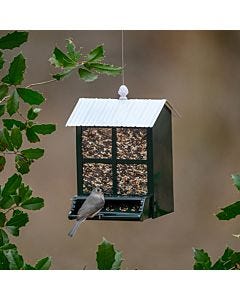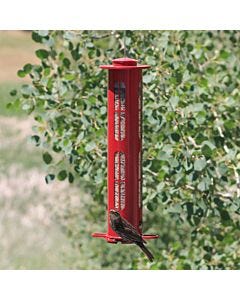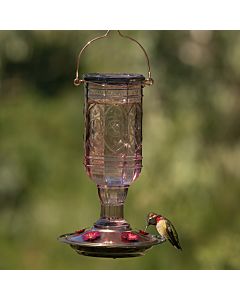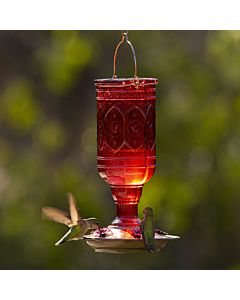Types of Hummingbird Feeders
Hummingbirds 101 »
Types of Hummingbird Feeders
Hummingbird feeders are one of the best ways to attract hummingbirds to your yard. Whether it’s decorative or simple in design, if they can drink nectar from it safely, they will. All hummingbird feeders are designed to hold hummingbird food, a solution of sugar and water, also called nectar.
The main differences between types of hummingbird feeders lie in the materials they are made from, the shape of the reservoir, and how they are filled. Many hummingbird feeders are called inverted feeders, meaning the nectar flows from a reservoir above and into the base, where the feeding ports are. These can be either bottom-fill or top-fill reservoirs. Some plastic hummingbird feeders are saucer feeders, referring to shallow dishes with ports directly above the nectar reservoir.
Every hummingbird feeder from Perky-Pet, More Birds, and Droll Yankees has been extensively tested to ensure it is safe, attractive, and comfortable for hummingbirds to use.








